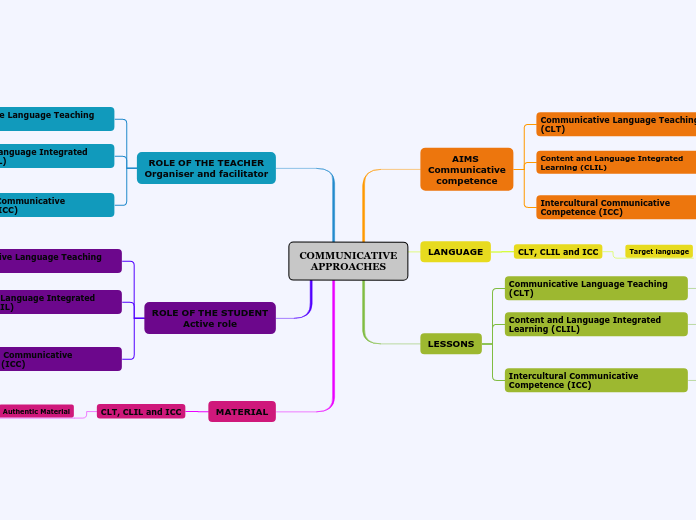CI 5326 chap 3&4
1) What I have learned from the reading:
Chapter 3: General Approaches to Universal Instructional Interventions
This chapter was about how to teach and create activities for diverse learners. Preparing for English Language Learners is also important. The teacher needs to know that there are different stages of language acquisition. There is also a section that provides teachers with strategies on how to present the material and getting ELL students engaged in the classroom.
Chapter 4: Critical Teaching Skills for Focusing Attention
This chapter focuses on ideas on how to start the lesson. The book talks about why it is important to explain to students about the lesson objective and its purpose. You want the students to focus on important parts of the lesson. Questions is essential during a lesson. As a teacher you might want to ask a low- level question to see what the students understand. When asking a higher-level question you expect the students to give you a variety of answers. You also want to engage all students through questioning. There are different methods to include students like draw sticks. When you have ELL in your classroom you want to make sure that you understand the different stages for learning English. Each stage has appropriate questions to ask ELL. As a teacher you also want to close off the lesson with review. This chapter is about keeping students involved in learning.
2) Questions:
1) How do you get an ELL engaged if they seem like they are not interested or intimidated by the subject?
2) How much time during a class period do you have to do chapter 4?
3) How could you implement ideas/ strategies from these readings in your current or future classroom?
I am a Bilingual Education major. I could learn how to apply the stages of language acquisition. Each stage is critical in getting the ELL students engaged in the classroom. As a teacher I want to create a great learning experience so they want to continue to rise through the language stages to become better English speakers. Learning at what stage they are at can help me ask appropriate questions at their level so they can be involved in class.
Opening
Responding to Diversity
the amount of time available for teaching
Student interest & motivation
Whether this is the 1st lesson
Concreteness of the content
Prerequisite skills or knowledge
Look at student background, experience, & prior knowledge
Strategies
Help students see relationships between the new knowledge or skill
Present graphic organizer
Connect to other subjects
State relationship between objective to long term goal
Show outline of the whole unit
Preview upcoming lessons or activites
Create context for learning
Activate background knowledge by connecting prior knowledge
Build Background knowledge
Connect to prior knowledge
Motivate or focus the students
Provide examples
Preview Lesson
Provide key idea
Show them the steps of the lesson
Get their attention
Ex: jokes, stories, etc
Purpose of objective activity
Explain objective
An activity before the lesson allows for students to make connections during the lesson.
Differentiated Instruction
Provide Options
Product
Students will demonstrate what they know.
Ex: Models, presentations, portfolios, & tests.
Process
Students apply what they have learned.
Content
Teacher flexibility in choosing curriculum topics.
Student learning preferences
Student interests
Student readiness
What they already know.
Using different techniques to teach students.
Questions
Closing
Restate lesson objective
Time for students to show their work
Describe when students are able to apply new knowledge
Preview future lessons
Allow students to draw conclusions
Review key points
English Language Learner questions
Ask questions that can address each language stage
Help students connect prior knowledge with new information
Do not always call on volunteers
Types
High- level& Low- level
Taxonomy
High- level questions
Evaluation
Synthesis
Analysis
Low-level questions
Application
Comprehension
Knowledge
Convergent& Divergent
Divergent (Higher- level thinking)
Teacher wants multiple answers.
Problem- solving skills
Convergent (lower- level thinking)
Teacher looking for one answer.
Basic knowledge& understanding
Teachers can monitor understanding of information
Provide review, rehearsal, & enrichment of information
English Language Learners
Provide Opportunities for Language Use
Use partner & small-group work
Use active participation strategies
Understandable Presentation
Give explanations or directions in a variety of ways
Use consistent language
Provide context & activate background knowledge
Use visual supports
Teach Vocabulary
Small amount of words
Just because student speaks English does not mean they understand academic instruction.
Teacher familiarizes stages for learning English.
Intermediate/ Advanced Language Proficiency Stage
Can take up to 5 to 7 years.
Make complex statements & express opinions.
Understand up to 6,000 words.
Speech Emergence Stage
Can last up to a year.
Speak short phrases, simple sentences, & ask simple questions.
Understand up to 3,000 words.
Early Production Stage
Can last for 6 months or so.
Students able to answer 1 or 2 sentences.
Understand up to 1,000 words
Preproduction Stage
Can last from hours to months.
Student does not feel comfortable to speak.
Student understands few words
Universal Design for Learning
6 Principles
Judicious Review
Review lessons ad apply what they have learned.
Strategic Integration
Lessons that lead to high level thinking.
Primed Background knowledge
A past learned skill that students need to complete new assignment.
Subtopic
Temporary help during lesson that leads students to individual practice.
Conspicuous Strategies
Steps for problem solving or completing tasks.
Big Ideas
Help students focus on key points ideas.
learning designed for a wider rage of students.
Originally focused on children with disabilities.









